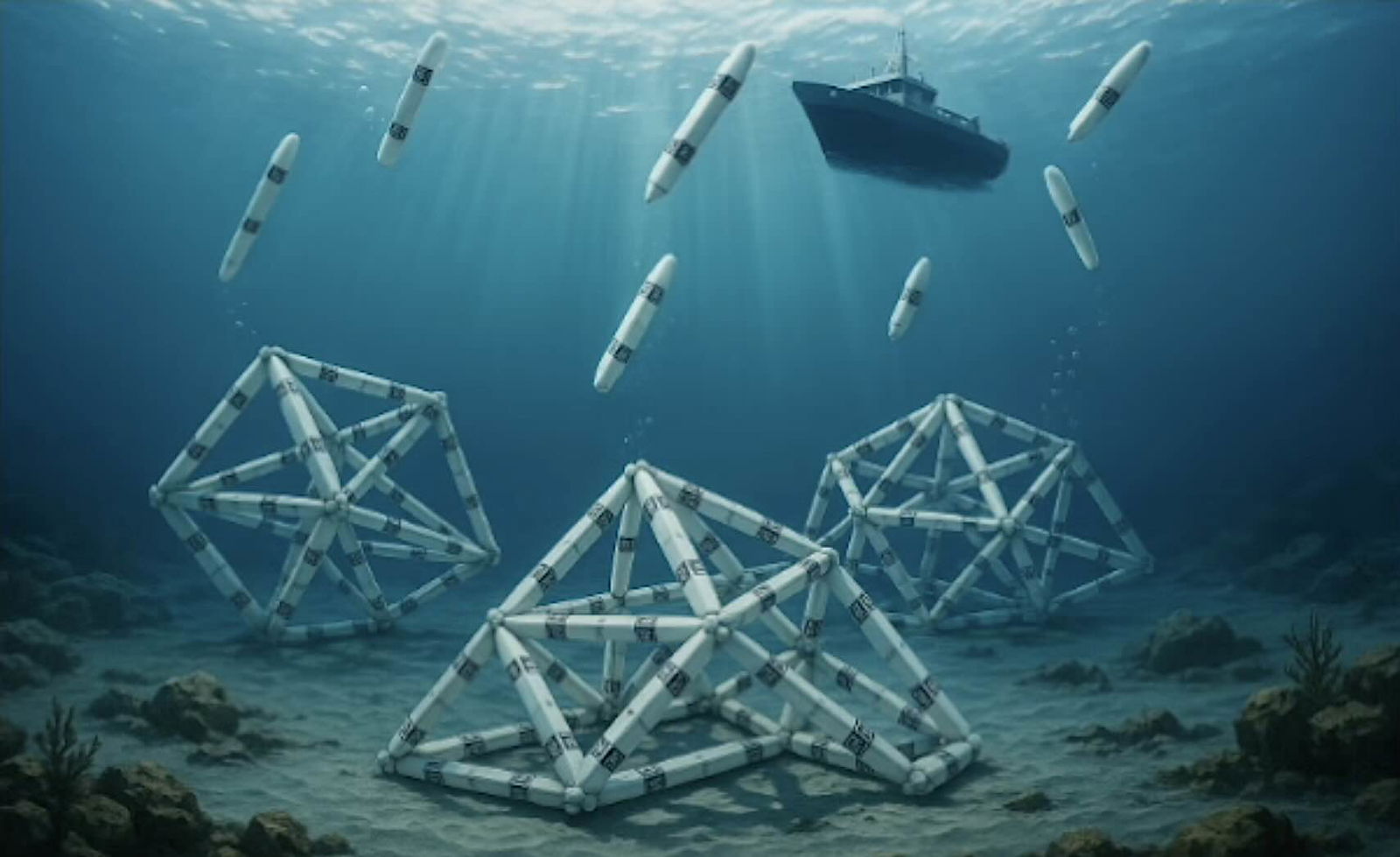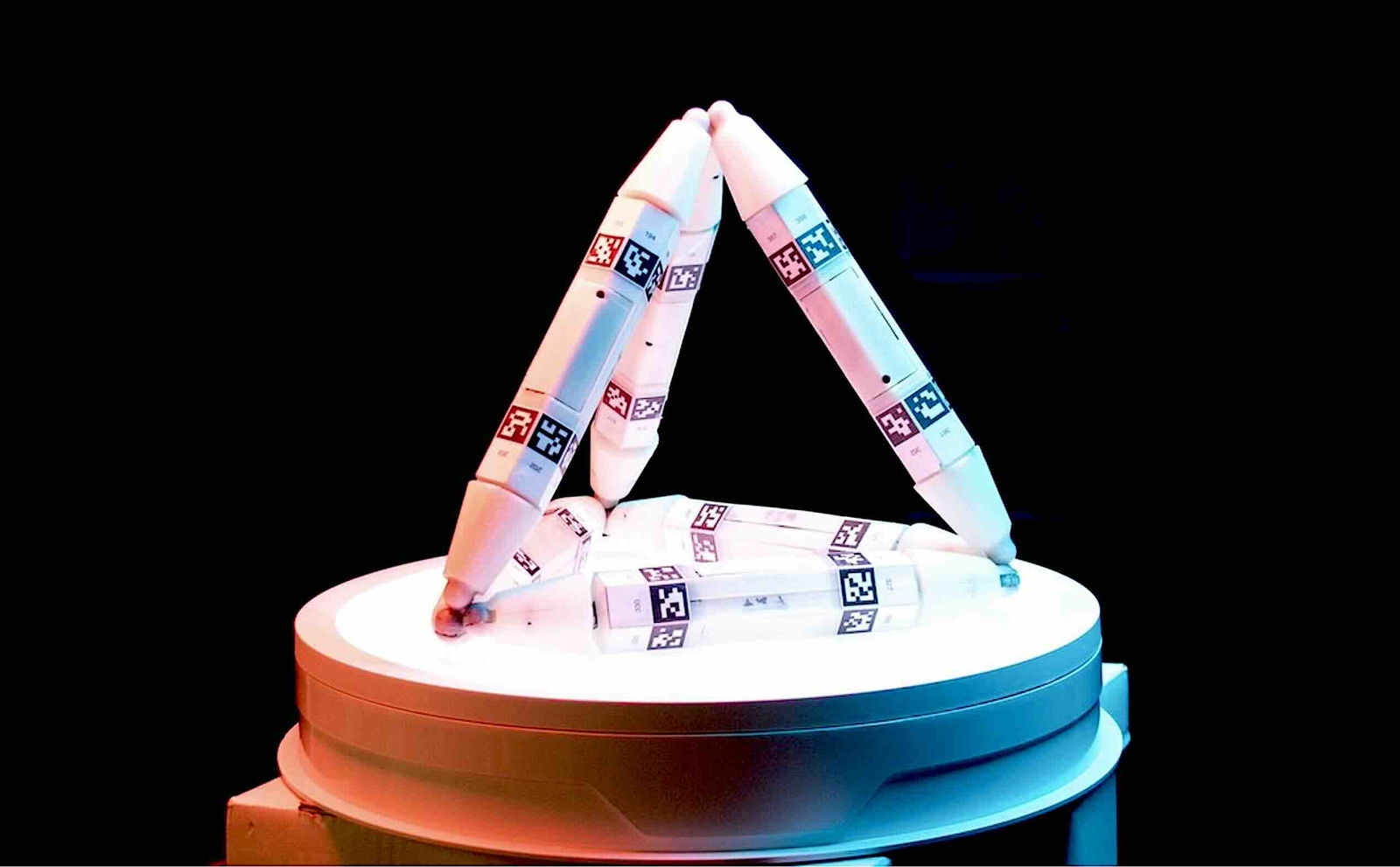Columbia University Engineers, funded by the Defense Advanced Research Projects Agency (DARPA), have developed a “robot metabolism” process that gives robots the unusual ability to consume other robots and use their components to heal, grow, and improve themselves.
In a statement, the researchers behind the ominous-sounding work say that the ability of robots to maintain and potentially improve their physical components and capabilities, while artificial intelligence systems are already expanding their own autonomous capabilities, is a necessary step toward “self-sustaining robot ecologies.”
“True autonomy means robots must not only think for themselves but also physically sustain themselves,” explained Philippe Martin Wyder, a researcher at Columbia Engineering and the University of Washington and the lead author of a study detailing the Columbia team’s research. “Just as biological life absorbs and integrates resources, these robots grow, adapt, and repair using materials from their environment or from other robots.”
Unlike biological organisms, robots lack the ability to change, repair, or improve their physical state without outside assistance. The Columbia researchers say this lack of autonomy has left modern-day robots “stuck,” as their physical forms are typically closed systems, “that can neither grow nor self-repair, nor adapt to their environment.” The problem is further exacerbated by the rapid increase in robot intelligence, leaving their physical capabilities increasingly far behind.
“Robot minds have moved forward by leaps and bounds in the past decade through machine learning, but robot bodies are still monolithic, unadaptive, and unrecyclable,” explained Hod Lipson, a Professor of Innovation and chair of the Department of Mechanical Engineering at Columbia University, and co-author of the study. “Biological bodies, in contrast, are all about adaptation – lifeforms can grow, heal, and adapt.”
Lipson said this biological adaptability stems from the fact that “modular” biological organisms can “use and reuse” components from other biological systems, such as amino acids. Ideally, the researcher says we will ultimately have to give robots the same capabilities, which he considers a nascent form of ‘machine metabolism.’
Thanks to funding from DARPA and the National Science Foundation (NSF), Wyder and colleagues have found a way to change that situation, starting with a robotic magnet stick called a “Truss Link.” Inspired by the Geomag toy, the researchers describe a Truss Link as a “simple, bar-shaped module equipped with free-form magnetic connectors that can expand, contract, and connect with other modules at various angles.” This versatility and set of capabilities allow the Truss Link to form increasingly complex physical structures.
In a series of laboratory experiments, the team demonstrated how these links could self-assemble into two-dimensional shapes. The team also showed how these two-dimensional shapes could “morph” into three-dimensional, functioning robots.
In the next phase, demonstrating robot metabolism, the team’s robots further improved their abilities and functionality by integrating new components into their design. In one example of these robots “growing” into more capable machines without outside interference, one of the team’s three-dimensional, tetrahedron-shaped robots “integrated” an additional link it used as a walking stick. According to the researchers, this simple self-improvement increased the robot’s downhill speed by more than 66.5%.
Lipson admits that the thought of robots able to adapt, improve, grow, and even potentially self-reproduce “conjures some bad sci-fi scenarios.” However, the director of the Creative Machines Lab, where the work was conducted, stated that keeping robots reliant on humans, even for simple maintenance, will become increasingly impractical as the number of robotic systems we encounter and interact with in our daily lives is expected to grow.
“The reality is that as we hand off more and more of our lives to robots – from driverless cars to automated manufacturing, and even defense and space exploration, who is going to take care of these robots? We can’t rely on humans to maintain these machines. Robots must ultimately learn to take care of themselves.”
In the study’s conclusion, the team said more research is needed to expand the potential applications of robot metabolism. However, they also envision a future where robotic systems, ranging from autonomous cars to autonomous spacecraft, will live in robot ecologies where machines can independently maintain themselves. Based on their research, this could include the ability to grow and adapt to unforeseen tasks and environments like biological organisms already do.

“By imitating nature’s approach—building complex structures from simple building blocks—robot metabolism paves the way for autonomous robots capable of physical development and long-term resilience,” they explained.

In his final thoughts, Wyder said robot metabolism will bridge the gap between AI and the physical world, thereby allowing these systems, which can already advance cognitively, to match that expansion with the ability to adapt and grow physically, “creating an entirely new dimension of autonomy.” This self-reliance could impact several industries and potentially make robot metabolism as commonplace as the intelligent AI people use daily.
“Initially, systems capable of Robot Metabolism will be used in specialized applications such as disaster recovery or space exploration,” the researcher concluded. “Ultimately, it opens up the potential for a world where AI can build physical structures or robots just as it does today, writes or rearranges the words in your email.”
Funded by DARPA and the NSF AI Institute in Dynamic Systems, “Robot Metabolism: Towards machines that can grow by consuming other machines” was published in Science Advances.
Christopher Plain is a Science Fiction and Fantasy novelist and Head Science Writer at The Debrief. Follow and connect with him on X, learn about his books at plainfiction.com, or email him directly at christopher@thedebrief.org.
